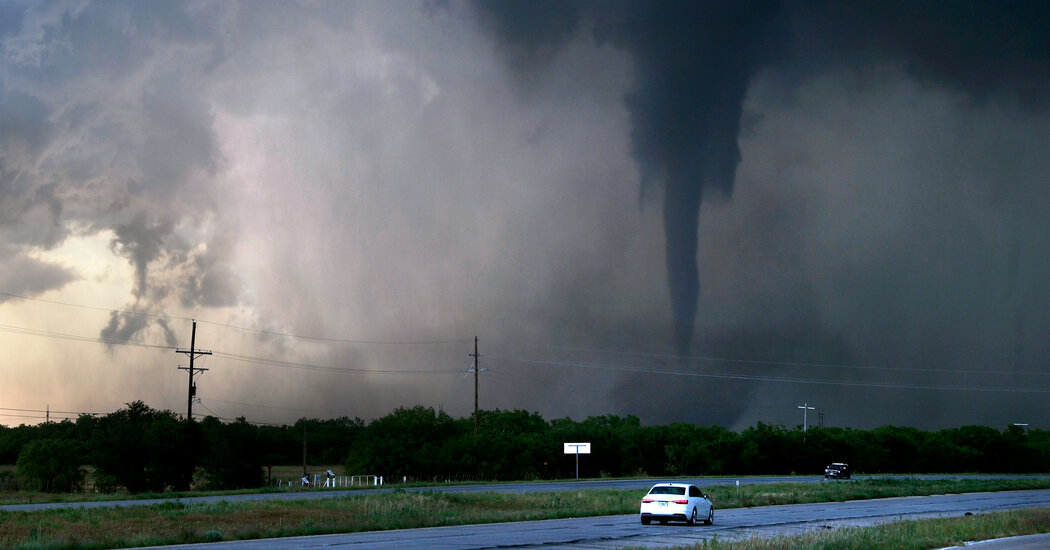Tornadoes tend to travel in packs these days, often with a dozen or more forming in the same region on the same day. On the worst days, hundreds can form at once.
More than a dozen tornadoes were reported on both Monday and Tuesday this week across the Great Plains and the Midwest, according to the Storm Prediction Center run by the National Oceanic and Atmospheric Administration. Two weeks ago, on the most active day in April, 105 tornadoes were reported.
While outbreaks like these have always happened, they have become more common in recent decades.
The total number of tornadoes in the United States each year has stayed relatively consistent over the last several decades, but they now happen in more concentrated bursts over fewer days during the year.
In the 1950s through the 1970s, on average about 69 percent of tornadoes in the United States happened on days with fewer than 10 tornadoes, and about 11 percent happened on days with 20 or more tornadoes. These percentages have shifted significantly in recent decades, according to a 2019 study. The researchers found that since 2000, on average only about 49 percent of tornadoes have happened on less busy days and about 29 percent have happened on days with 20 or more tornadoes.
“Now when tornadoes happen, they often happen in an outbreak environment,” said Tyler Fricker, an assistant professor of geography at the University of Louisiana Monroe and one of the authors of the study.
While the timing of this trend lines up with the planet’s rising temperatures, scientists are hesitant to definitively attribute tornadoes’ clustering behavior to human-caused climate change.
“The link between climate change and tornadoes is still pretty tenuous,” Dr. Fricker said. “It’s a really open and difficult question for us.” One difficulty is that tornadoes are too small on a planetary scale, and too ephemeral, to show up in the global mathematical models that scientists use to study climate change.
Researchers can, however, look at patterns in the historical record. As more tornadoes cluster together, busy outbreak days are getting busier, according to Zoe Schroder, an assistant professor of meteorology at Embry-Riddle Aeronautical University. “When we do get these outbreaks, they’re often larger, meaning that they have more tornadoes in them,” she said.
Scientists can also look at how atmospheric conditions that lead to tornadoes are changing.
There are two main ingredients to tornadoes, said Jana Houser, an associate professor of meteorology at The Ohio State University. The first is atmospheric instability caused by warm, moist air close to the ground meeting colder, dry air above. The second is vertical wind shear, or changes in wind speed and direction at different altitudes.
As the climate changes, there might be fewer days with both these ingredients. “But when we have conditions that are favorable, they’re almost supercharged,” Dr. Houser said, leading to more tornadoes on fewer days.
Tornadoes are also spreading farther east from the region people have historically thought of as “Tornado Alley,” the Great Plains states running south to north from Texas to the Dakotas. (Central Canada also experiences tornadoes, but fewer than the United States.)
In the past several weeks, tornadoes have struck not just the Great Plains but also parts of the Midwest, Appalachia and the Southeast.
Spring is typically the busiest time of year for tornadoes. “It’s not completely out of the ordinary for us to have a very active season right now,” Dr. Schroder said.
So far in 2024, the United States has had a total of 639 tornadoes. That’s slightly more than average for this time of year, but far fewer than the worst year on record, 2011, when there had already been 1,287 tornadoes by May 7.
Dr. Houser emphasized, however, that although there are seasonal and geographic patterns, tornadoes “can and do occur anywhere” in the United States.


